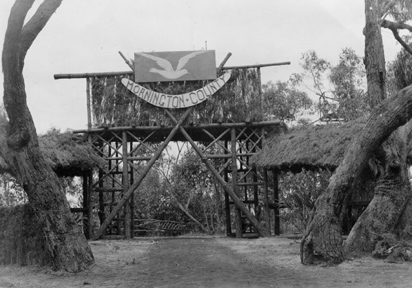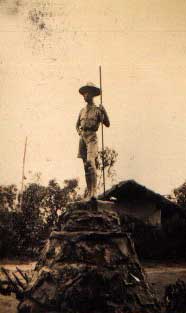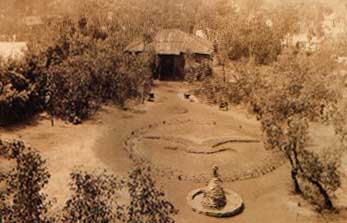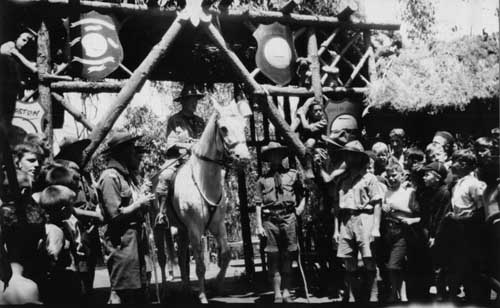
Local plans for the Jamboree took place early in 1934. By August, the Mornington County Scout Council was able to release participation details for the six sub-groups attending the Jamboree:

Paths of red gravel were put down. A pond, with a rock fountain and a bronze statuette ("The Jamboree Scout" by Paul Montford) adorned the garden. The cultivated grounds included palms, petunias and hydrangeas.

The Frankston and Somerville Standard, 21st December, 1934, describes garden preparations as follows:
"Desperate efforts are being made to hasten the growth of plants in the garden which has been arranged in the centre of the section. One plot is in the form of a seagull in flight and another is that of the fleur-de-lis."

An extensive display of native fauna had been proposed for the site, however, accounts written during the Jamboree would suggest that this plan was not fully realised: an aviary containing budgerigars and an opossum was placed near the entrance. County exhibits were on display within thatched structures astride the entrance gate.

The County's enthusiasm was not confined to the establishment of a camp. They produced a most interesting pageant, "The Pilgrimage of Youth." The Frankston and Somerville Standard, 25th August, 1934, outlines the part to be played by the individual Troops.
For the local scouts, participation in Jamboree activities was in sharp contrast to the hikes which had previously taken place in this normally remote area.